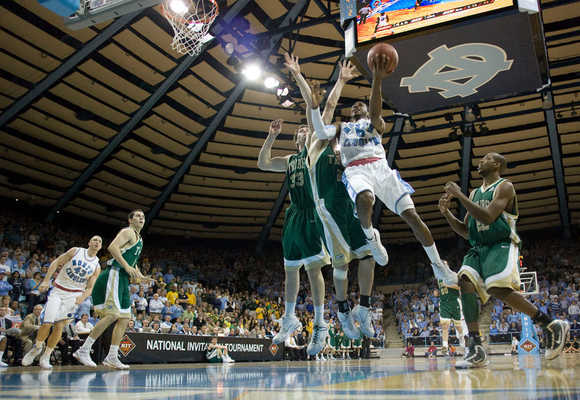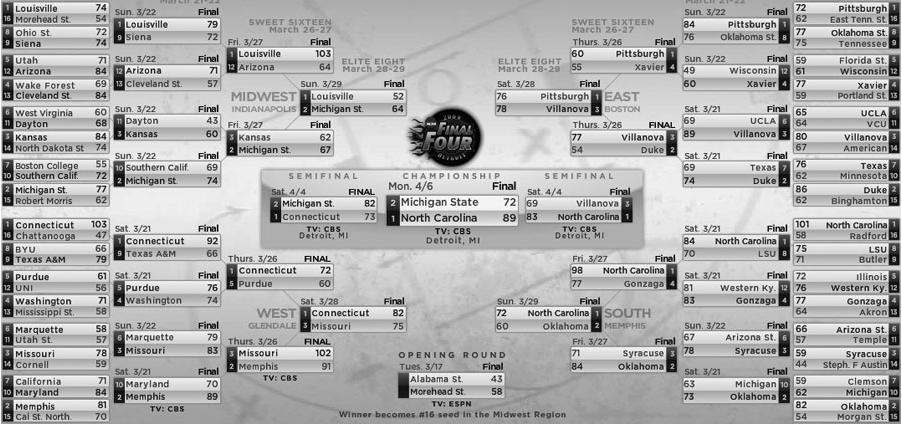That’s Debatable: Giving Thanks
Posted by rtmsf on November 25th, 2010That’s Debatable is back for another year of expert opinions, ridiculous assertions and general know-it-all-itude. Remember, kids, there are no stupid answers, just stupid people. We’ll try to do one of these each week during the season. We’re fairly discerning around here, but if you want to be included, send us an email with your take telling us why at rushthecourt@yahoo.com. And have a beautiful Thanksgiving, everyone.
This Week’s Topic: It’s the time of year to give thanks. What college basketball related thing are you most thankful for this season?
Matt Patton, RTC Contributor
Early season tournaments. This year feels like one of the best years ever: the Maui Invitational (Kentucky, Michigan State, Washington and UConn), Puerto Rico Tip-Off (Vanderbilt, Minnesota and UNC), 2kSports Classic (Pitt, Texas and Illinois), and CBE Classic (San Diego State, Gonzaga, Kansas State, Marquette and Duke) all highlighted at least three at-large NCAA teams with an astounding 13 teams that have appeared in the top 25 counting UConn’s imminent inclusion. That’s really unbelievable when you think about it: we saw 15 probable at-large bids face off against at-large talent, and the conference season is still a month away! Some early season tournaments are jokes (here’s looking at you, Cancun), and it’s annoying that the Puerto Rico Tip-Off takes place in a gym the size of my high school’s (with horrible attendance to boot). But don’t act like it wasn’t awesome to see Duke battle Kansas State on a “neutral” floor two hours from the Little Apple, or Washington and Kentucky take their talents to Maui (and the impressive mobility of Big Blue Nation for migrating across the country). These are the nonconference clashes of titans that normally take place only in our sleep, in March, and now in November.
Zach Hayes, RTC Editor/Contributor
I’m most thankful for the seniors that have stuck around to play college basketball for four years. Given the pressure of today’s one-and-done-or-failure mentality, the seniors that have graced the college hardwood for four seasons truly represent what this sport should be about on and off the court. Whether it’s Kyle Singler’s silky smooth jumper, the end-to-end quickness of Corey Fisher, the rebounding prowess of Kenneth Faried, the scoring artistry of Jimmer Fredette or the leadership qualities of Kalin Lucas, these wily veterans will have dazzled us loyal hoop viewers from their first day at practice as a freshman to the moment they receive their college degree. They didn’t appear and disappear from our lives after four months. They didn’t decide to play overseas and collect that first paycheck as soon as possible. After studying how they’ve improved and tracking their ups and downs after four winters, these players almost seem like family. They take us back to a time when staying through your senior year was applauded rather than stigmatized. Mr. Singler, Fisher, Faried, Fredette, Lucas and all the rest of the seniors that deserve so much more attention than they receive, I thank you.
Brian Otskey, RTC Contributor
I’m most thankful for the NCAA, believe it or not. The much-maligned organization has had a very good year. Most importantly, they resisted the urge to expand to a 96-team tournament which would have been an unmitigated disaster. Just imagine a 5-11 NC State team or 6-12 St. John’s making it into the tournament. That would have likely happened last season under a 96-team format. I realize they are probably not done with expansion but let’s give them some credit for holding off, at least for now. The NCAA has also cracked down on some name brand programs, most notably Kentucky, declaring Enes Kanter ineligible. This was the correct decision as there is just no way a professional athlete should be able to play an amateur sport. Connecticut and Jim Calhoun have also come under fire from the “new” NCAA. Don’t forget Bruce Pearl’s situation, Baylor being the subject of an investigation and Oregon as well. I’m sure there is more out there and hopefully the organization will continue its crackdown in the coming years. The NCAA is still a heavily bureaucratic operation with many problems but 2010 has been a positive step in the right direction for collegiate athletics.
Brian Goodman, RTC Editor/Contributor
I’m thankful for Marquette and Connecticut turning heads with their performances this week. The preseason rankings in the Big East read as Pittsburgh, Villanova, Syracuse, Georgetown and everyone else. Marquette was tabbed eighth; the Huskies tenth. While the top two have handled things on their end, Jim Calhoun and Buzz Williams’ squads are already in the kitchen cooking up some crow. Five time zones away from Storrs, UConn made an early splash in Maui on par with last year’s party crashing from Syracuse in New York City. The Huskies were predicted to finish in the bottom half of the conference, and those who cover the Big East hitched their wagons to Austin Freeman for individual honors over Kemba Walker. The Husky junior’s response is loud and clear, exploding for 90 points over three games at Lahaina. The nation awaits the conclusion of the NCAA’s investigation into misconduct on the part of the Huskies’ staff, but in the meantime, credit Calhoun for keeping his young team sharply focused. Yes, the Golden Eagles left Kansas City with two losses, but they gave #1 Duke far more than #4 Kansas State could manage against the Blue Devils. The next night, they nearly sent Bulldog Nation into panic mode before falling short. Marquette will readily take on any challenge thrown their way and fight harder than many of the nation’s premier teams to make a name for themselves. Despite their lack of a consistent post option, they will never use it as a crutch. The Big East is at its best when these two teams are in the thick of things.















































